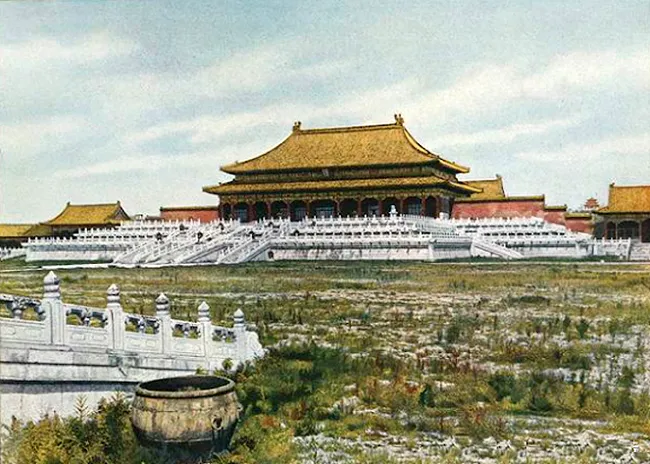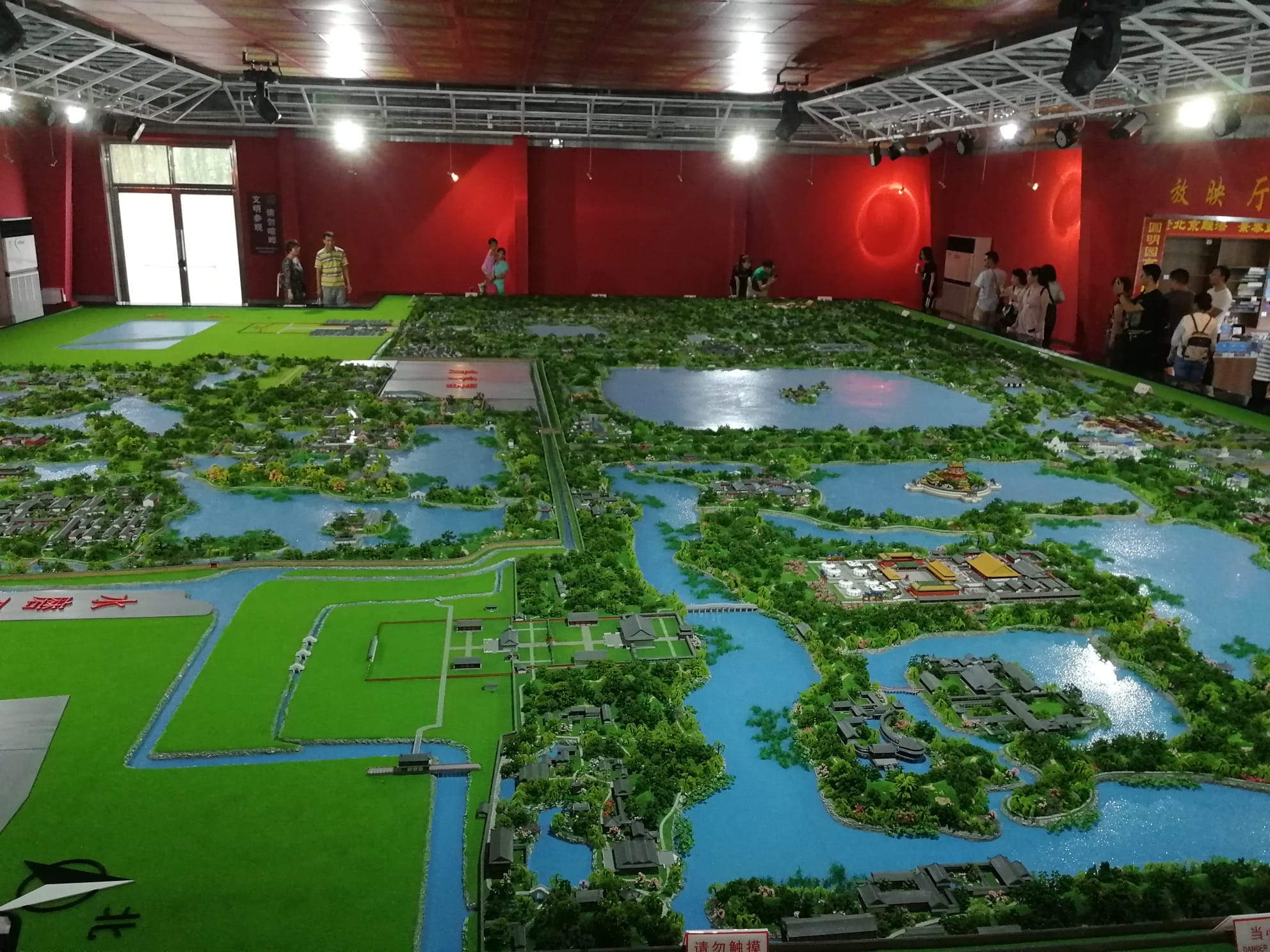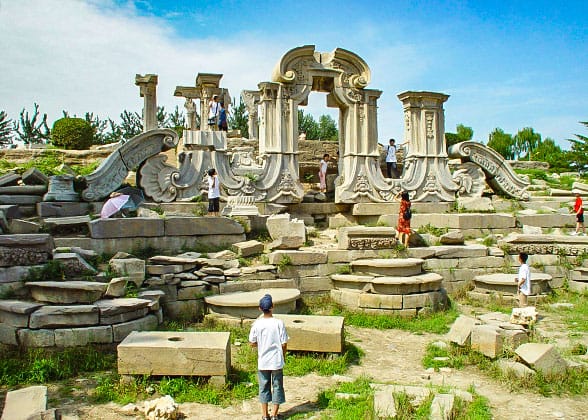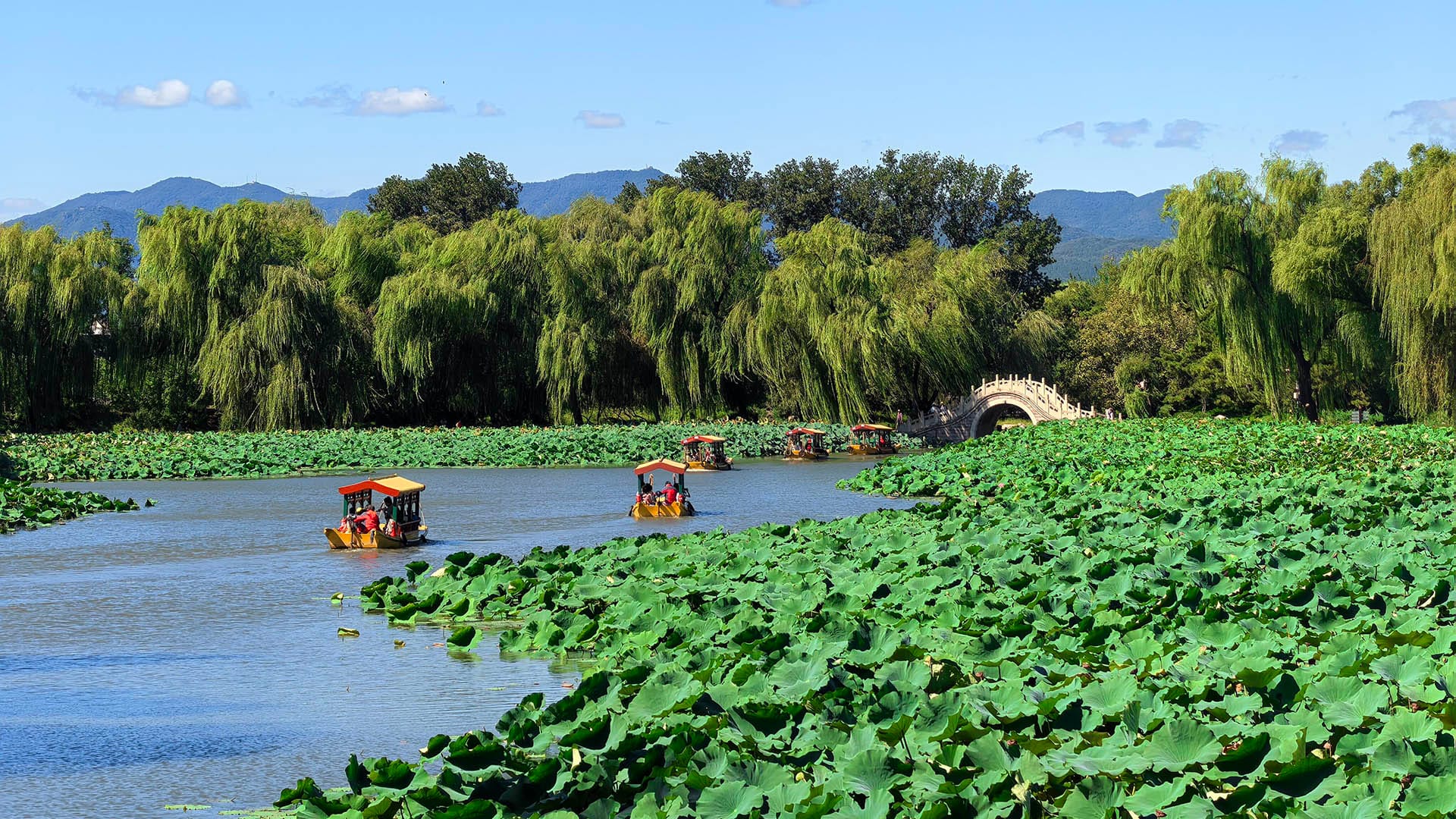Beijing

Better to be a broken piece of jade than an intact piece of pottery.
宁为玉碎,不为瓦全
Is it better to restore once-destroyed ruins to their former glory or leave them as a reminder of what happened? The Chinese proverb above is about integrity: how do we respect the past? Or should we?
The Forbidden City shown above has been restored, as has the Summer Palace in the Haidan District in northwest Beijing. But, what would you do with the ruins of the Old Summer Palace next to it, in what is now Yuanmingyuan Park? It was massive - five times the size of The Forbidden City - first built in 1709, and then destroyed in 1860 by British and French troops in an act of retaliation against the Qing rulers during the Second Opium War. This is a scale model:

Today, it's still ruins, but many Chinese see the destruction as barbaric foreign aggression and they want to preserve the ruins ("a broken piece of jade") as a memory, a shrine. Very few Westerners would have agreed with this back in the 1860's, but Victor Hugo did. In his letter "Expédition de Chine," he described the looting as:
Two robbers breaking into a museum, devastating, looting and burning, leaving laughing hand-in-hand with their bags full of treasures; one of the robbers is called France and the other Britain.
Those treasures can now be found in museums all around the world. Hugo called for them to be returned, and they should be. Since most buildings were made of wood, only the stone survived the burning, like in this photo. Below that are other scenes from today, since it's a popular tourist spot.



Let's return to the Forbidden City, the Winter Palace. It has been associated historically and architecturally with red, the color of good fortune, and yellow, the color of Ming and Qing power.
But, it is also associated with purple, the "noble" color of the Jade Emperor. He was also known as the Heavenly Emperor who lived in the Purple Palace - Zijin Cheng ("The Purple Forbidden City"), because like the North Star, Polaris, everything was believed to revolve around him, the still point of the turning world. Spun around this was an elaborate system of astrology known as Ziwei doushu, 紫微斗数, or "purple star astrology," and it's widely used today.
Other Beijings: The Wizard of Oz and China, Puccini's Turandot, China and Imperialism.
